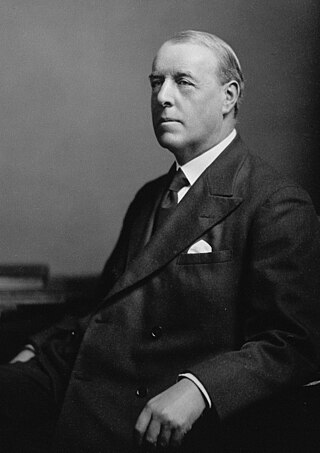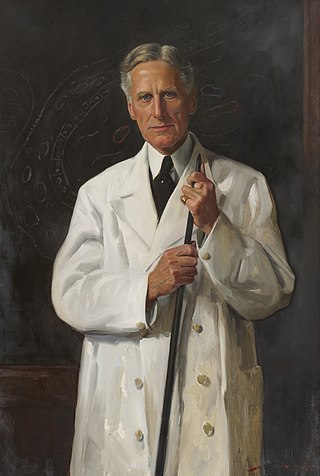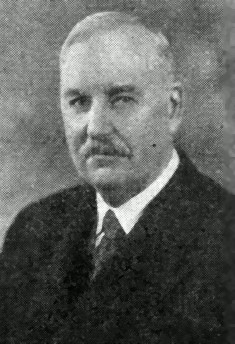The Royal Medical and Chirurgical Society of London (RMCS), created in 1805 as the Medical and Chirurgical Society of London, was a learned society of physicians and surgeons, that received a Royal charter in 1834, and a supplement charter in 1907 to create the newly merged Royal Society of Medicine.
Physician to the King is a title held by physicians of the Medical Household of the Sovereign of the United Kingdom. Part of the Royal Household, the Medical Household includes physicians, who treat general conditions, and extra physicians, specialists who are brought in as required.

Dame Alice Josephine Mary Taylor Barnes,, known professionally as Dr Josephine Barnes, was a leading English obstetrician and gynaecologist. She was the first female president of the British Medical Association, 1979. Barnes was also active in the Women's National Cancer Control Campaign with cancer screening.

Samuel James Cameron was Regius Professor of Midwifery at the University of Glasgow from 1934 until 1942. The son of Caesarean Section pioneer Prof Murdoch Cameron, S.J. Cameron was a foundation Fellow of Royal College of Obstetricians and Gynaecologists in 1929, and for many years a member of the Gynaecological Visiting Society. A lifelong champion of the reputation of the founder of professional midwifery in the British isles, William Smellie, Cameron both named a maternity hospital at Lanark, Scotland, after him and saved Smellie's library from permanent loss.

Sir William Henry Broadbent, 1st Baronet was an English neurologist who was a leading British authority in the field of cardiology and neurology. He also performed research involving diseases such as tuberculosis and cancer. In 1881 he was elected President of the London Medical Society and in 1887 President of the Clinical Society of London. Broadbent was a Physician-Extraordinary to Queen Victoria and Physician-in-Ordinary to King Edward VII and the Prince of Wales.

The Hunterian Society, founded in 1819 in honour of the Scottish surgeon John Hunter (1728–1793), is a society of physicians and dentists based in London.
The Harveian Oration is a yearly lecture held at the Royal College of Physicians of London. It was instituted in 1656 by William Harvey, discoverer of the systemic circulation. Harvey made financial provision for the college to hold an annual feast on St. Luke's Day at which an oration would be delivered in Latin to praise the college's benefactors and to exhort the Fellows and Members of this college to search and study out the secrets of nature by way of experiment. Until 1865, the Oration was given in Latin, as Harvey had specified, and known as the Oratio anniversaria; but it was thereafter spoken in English. Many of the lectures were published in book form.

The Lumleian Lectures are a series of annual lectures started in 1582 by the Royal College of Physicians and currently run by the Lumleian Trust. The name commemorates John Lumley, 1st Baron Lumley, who with Richard Caldwell of the College endowed the lectures, initially confined to surgery, but now on general medicine. William Harvey did not announce his work on the circulation of the blood in the Lumleian Lecture for 1616 although he had some partial notes on the heart and blood which led to the discovery of the circulation ten years later. By that time ambitious plans for a full anatomy course based on weekly lectures had been scaled back to a lecture three times a year.

William Blair-Bell was a British medical doctor and gynaecologist who was most notable as the founder of the Royal College of Obstetricians and Gynecologists in 1929. Blair-Bell was considered the greatest gynaecologist of the 20th century, raising it from what was then a branch of general surgery into a separate medical specialism. He was subject of a biography by Sir John H. Peel.

Robert Barnes was an English obstetric physician, known as a gynaecologist, teacher, author and medical politician.
The Milroy Lectures are given on topics in public health, to the Royal College of Physicians, London. They were set up by money left by Gavin Milroy, who died in 1886.

Henry Oldham was an English obstetric physician and co-founder of the Obstetrical Society of London.

Edward John Tilt (1815–1893) was an English physician and medical writer.
Charles James Cullingworth (1841–1908) was an English gynaecologist and obstetrician.
Charles Hubert Roberts (1865-1929) was a British surgeon, physician and lecturer in the fields of gynaecology and obstetrics. He was highly regarded for his diagnostic and surgical skills and was considered to have been an inspiring teacher. He served as Senior Physician to the Samaritan Free Hospital for Women and Physician to In-Patients at Queen Charlotte's and Chelsea Hospital.

Francis James Browne (1879–1963) was professor of obstetrics and gynaecology and first director of the obstetric unit at University College Hospital, London, which was opened in 1926. He was known as "FJ".
Thomas Watts Eden FRCOG was consulting obstetric physician to Charing Cross Hospital and consulting surgeon to both Queen Charlotte's Hospital and the Chelsea Hospital for Women. During the First World War he served as a major with the Royal Army Medical Corps. He was a founding fellow of the Royal College of Obstetricians and Gynaecologists.

Herbert Ritchie Spencer was professor of obstetrics at University College London.

George Harold Arthur Comyns Berkeley was an obstetric physician, gynaecological surgeon and medical writer. Berkeley was most notable along with William Blair-Bell and Sir William Sinclair for creating the British College of Obstetricians and Gynaecologists. Berkeley was also noted for his writing collaborations with Victor Bonney, the book A Textbook of Gynaecological Surgery that is still considered a medical classic. It was as teacher that he excelled.

William Edward Fothergill was professor of clinical obstetrics and gynaecology at the University of Manchester.